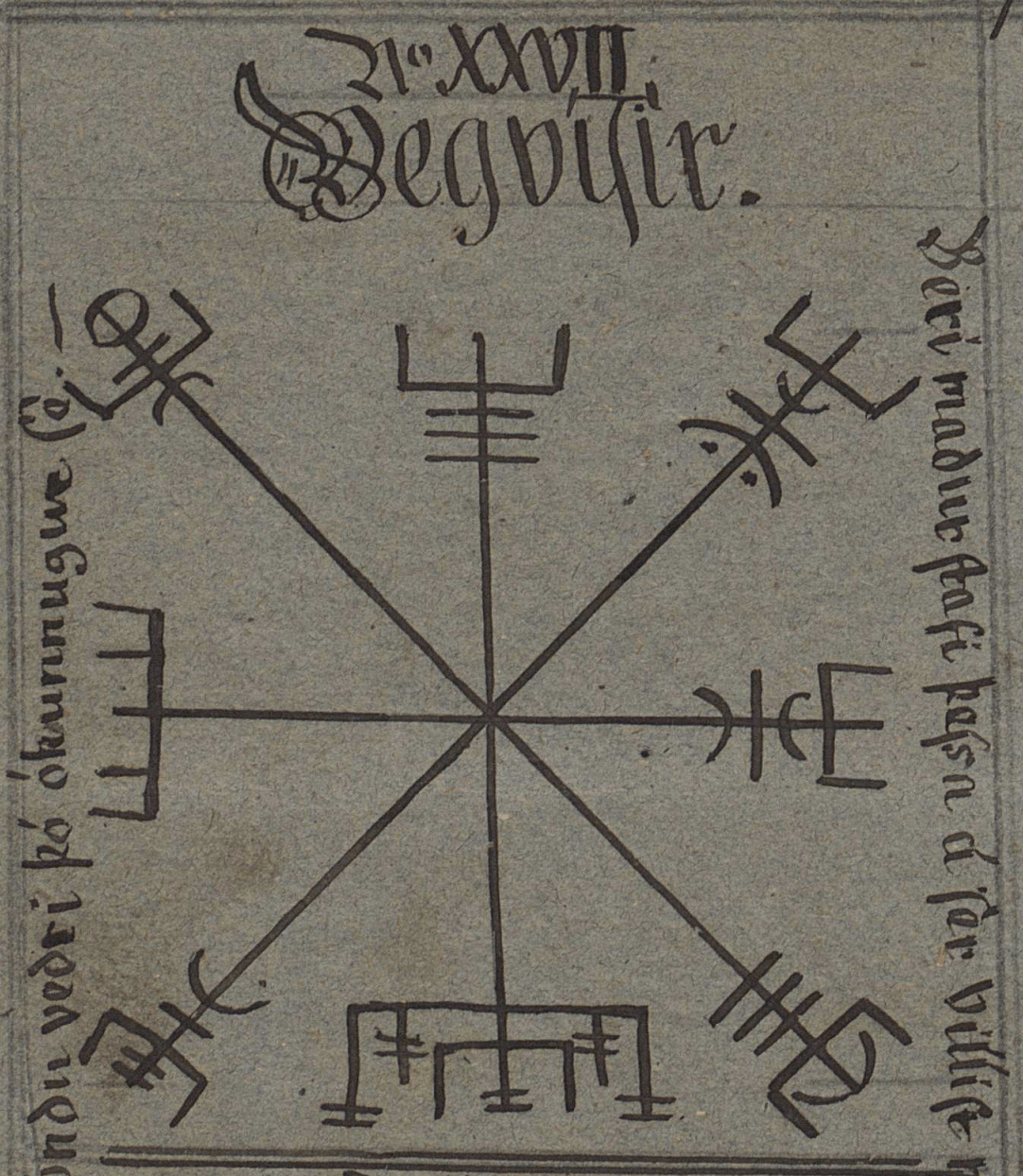
Contained within its intersections are all of the runes – representing all of the possible events that have happened in the past, the present and the future. The symbol we know as the Web of Wyrd is formed of nine lines. They choose who will live or die at birth as well as determine what events happen to people during their lifetime. They sit by the well of fate, weaving, and measuring out time by the length of their threads. They live beneath Yggdrasil, the world tree, and they are the guardians of life. In the Völuspá we learn of the three norns: Urd (Old Norse Urðr, “The Past” and a common word for fate in and of itself), Verdandi (Old Norse Verðandi, “What Is Presently Coming into Being”), and the third Skuld (Old Norse Skuld, “What Shall Be”). In Norse mythology, the wise Norns are mysterious beings who exist in between and beyond what is known. The Web of Wyrd was created by the Norns/Nornir. It illustrates how actions in one time can affect another – for example if you do something now it may have an effect on what happens to someone else later down their own timeline or journey through life…or vice versa! The Web of Wyrd (also sometimes called Skuld’s net) is a symbol that represents the interconnectedness and interdependency between past, present & future. If your warding spell feels happy and welcoming, it may not be doing its job. In other words, the symbol should evoke a feeling that is in alignment with the goal of the working. Stephen Flowers states “if the operation seeks harmony and goodwill, symmetry and grace may be your guiding principle, but if destruction or chaos is your aim, then perhaps the resulting magical sign should reflect this spirit.” The finished symbol should include each of the runes needed but also encompass the intention of the spell. The position of each rune and form of the finished bindrune is completely up to the magician. Next, the runes are combined to form a bindrune – here’s where creativity comes into play.

These magical symbols are created using either a name of Odin or a word translated into old Norse then written out with the runes of the younger futhark – this would be considered the scientific part. Just like cooking, creating Galdrastafir is a mix of science and art. Each cook adapts it to their tastes but, while you can definitely make your own recipes, it’s much easier after you’ve practiced with some proven formulas to understand how the ingredients come together and what works best. They recorded the successful symbols in books (grimoires) to be passed on to the next generation of galdur practitioners who would then elaborate on this work.Ĭonsider this type of magic to be sort of like a recipe. Galdur stave magic has been used in Iceland since ancient times by magical practitioners experimenting with various signs until they found one that worked. Galdor magic was a very secretive practice – in large part because it was illegal in many areas after the introduction of Christianity. However the original rune meaning may no longer be recognizable as the creator often wanted to conceal their work. These signs or magic staves began as runic symbols that make up words or names in Old Norse. If you break up the word into its two parts Galdra (from Galdur) meaning magic, and Stafir meaning letters, it makes sense that this family of symbols is based on the runes. Whatever working you’re trying to do will dictate the shape of the symbol you use. Think about the intention you wish to achieve with your magic sigil – Do you wish to draw energy towards you? Put up a shield between you and negative energy that is around you? Try drawing some Aegishjalmur yourself and experiment with the way they make you feel. Looking at it this way, we can picture the arms of Aegishjalmur radiating out from ourselves, directing energies either outward or inward depending on the symbols (terminal figures) on the arms of the sign and the intention of the workings.

The arms of the staves grow outward from the core towards everything beyond it. At the centre is the core – the self or the subject of the magical working. Flowers explains the Aegishjalmur as representing the entirety of the universe. By changing the number of arms as well as the location and shape of the forked symbols on each arm, you can personalize the nature of the magical working to accomplish various intents. This style of symbol is very common within the Icelandic magical workings because it’s simple to learn and you can easily adapt it to suit your particular needs.

While most people think Aegishjalmur or “Helm of Awe” is a single symbol, it’s actually a family of widely varied symbols built around a common form: a generally round, symmetrical sigil with an even number of forked arms radiating outward from a centre point.


 0 kommentar(er)
0 kommentar(er)
